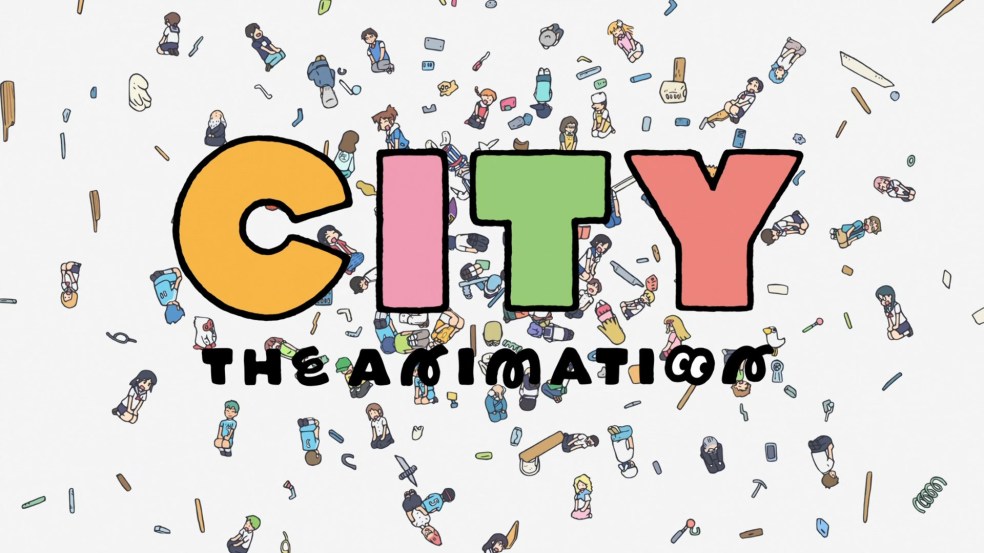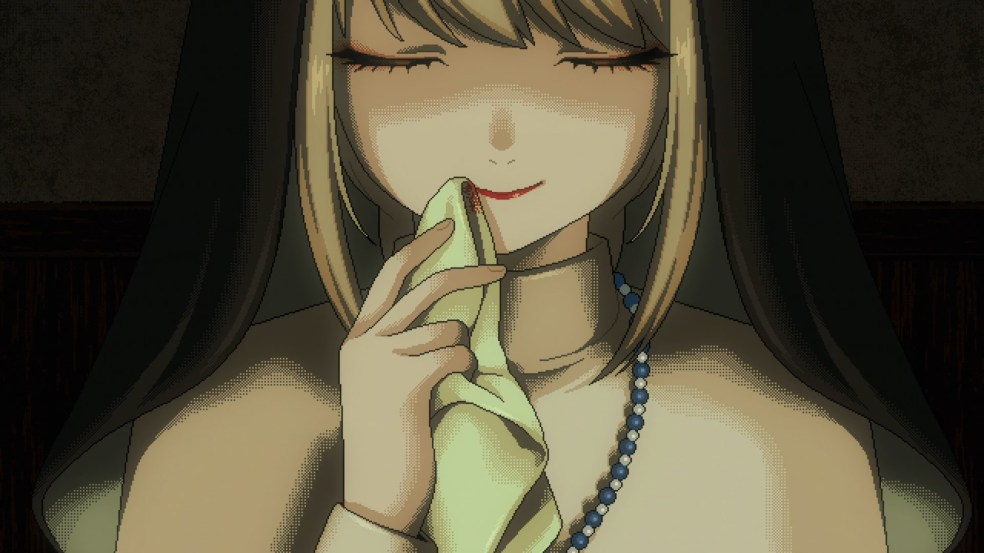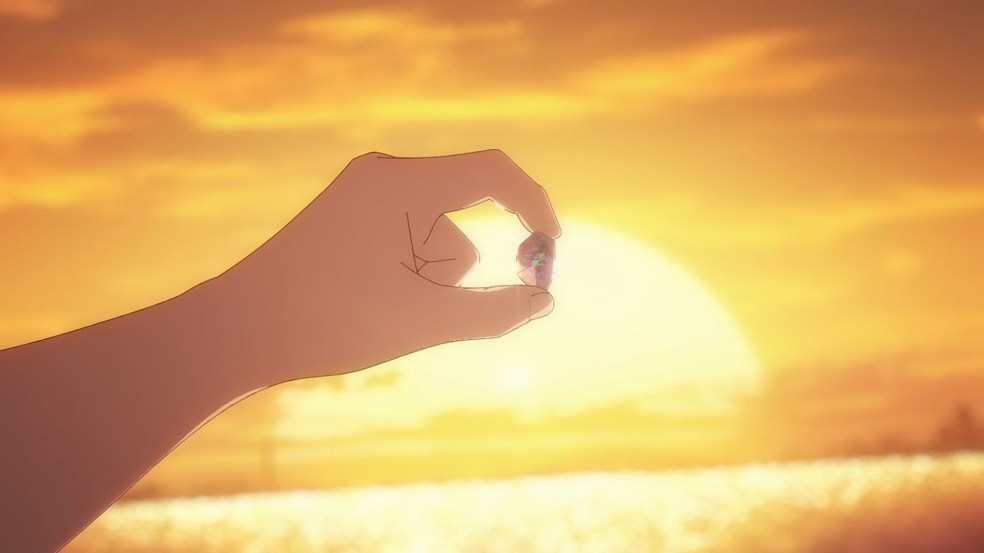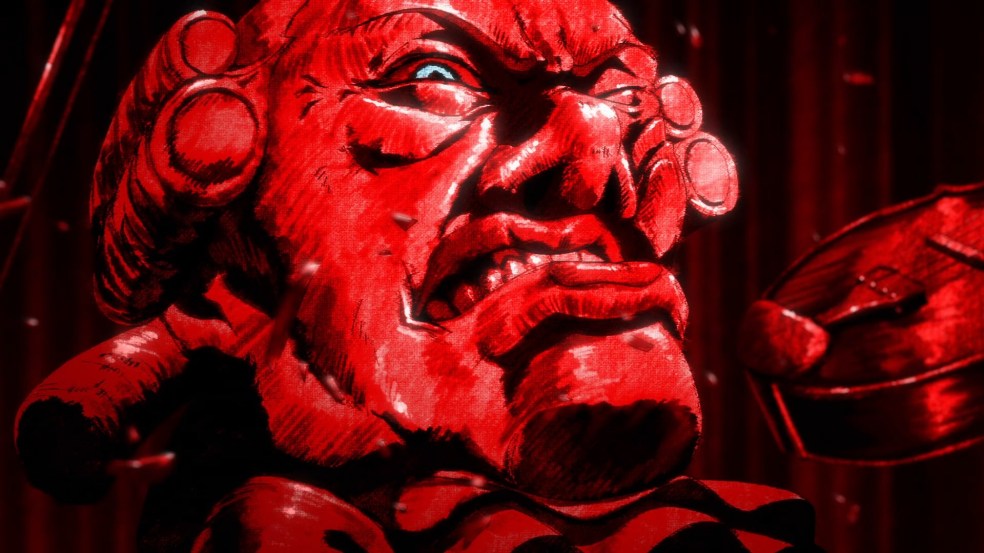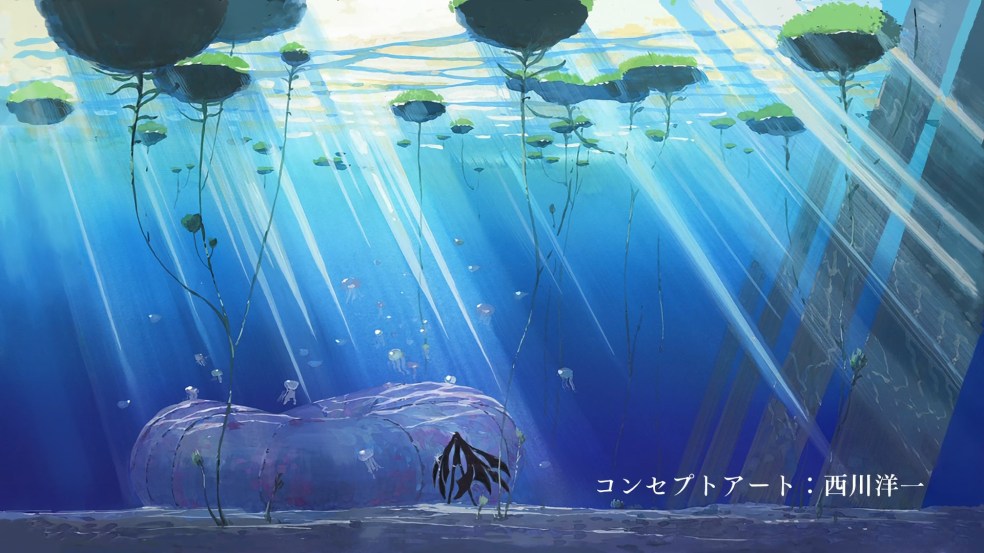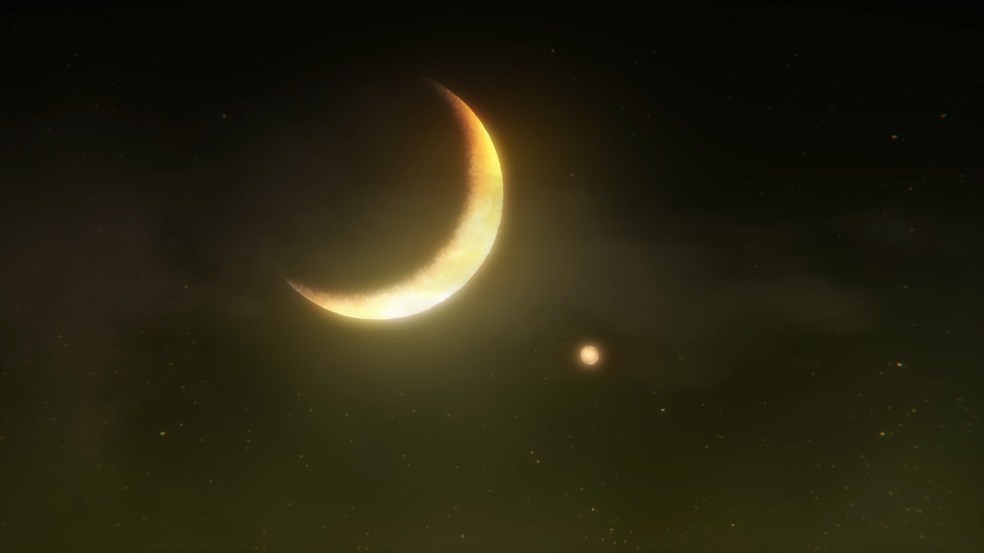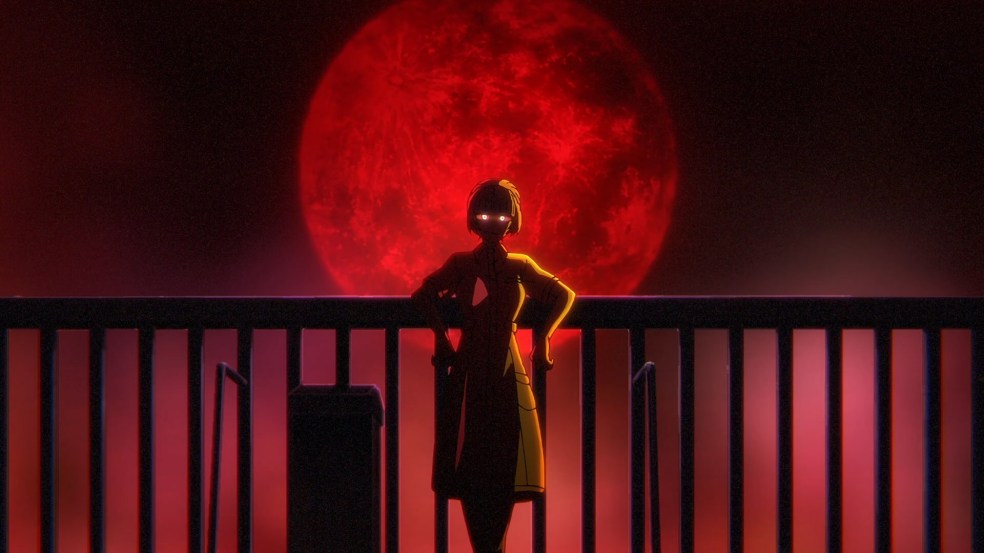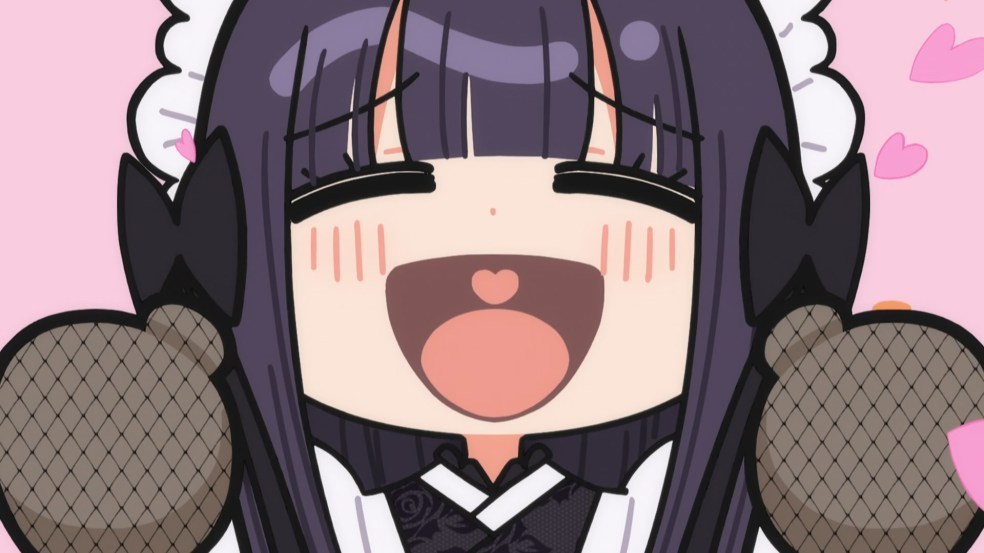The Weekly Orbit is a (sometimes) weekly column collecting and refining my more casual anime- and manga-related thoughts from the previous week. Mostly, these are taken from my tumblr blog, and assume at least some familiarity with the works covered. Be wary of spoilers!
Hello folks! Welcome to the last Weekly Orbit of the season. Most of what we have here today is, accordingly, finales, so I hope you’ll enjoy one last ride with these anime before they leave this blog forever (until the end of the year list).
CITY THE ANIMATION – Episode 13 (Finale)
It’s a bit cliché for a comedy series to end on a sad episode. CITY is allergic to cliché, so while we do get a teary send off between Eri and Matsuri here, most of the episode is the same pure joy that the entire rest of the series has spent building up.
CITY, all things considered, is a best case scenario for a manga adaptation, doing things that only an anime can do rather than just trying to replicate the manga as best it can. Eri and Matsuri’s departure is bittersweet, and probably CITY‘s best play at poignance, but the real treat of the finale, for my money, is the massive, rollicking musical number that closes the series out. It’s a truly insane thing, featuring by my count every character introduced to the series’ massive ensemble cast over the previous twelve episodes, a good seven or eight different tunes, and a hilariously dumb plot about the Makabe’s Western restaurant getting what they think is a Michelin star.
If I have a gripe, it’s that this musical number isn’t dubbed (the English voice track just fully switches over to the JP about halfway through the episode. Something I only noticed because this is the rare anime I’ve watched some of dubbed), but given the sheer amount of voice talent involved it’s understandable, if a bit annoying. That quibble aside, this is a fantastic capstone on one of the year’s best anime, something people will point to in ten, twenty years to show others what truly great anime in the 2020s could look like. It’s a warm, joyful thing, something that understands that our daily lives themselves, no matter how mundane or absurd, are, in their way, a series of miracles.
Dusk Beyond The End of The World – Episode 1
Mixed in with all of these endings is a new beginning. It was actually this, not Last Boss, that was the first anime I watched a premiere of this season. Unfortunately, it kinda sucked, and while my opinions on Last Boss are mixed, too, my view of Dusk is dim enough that I didn’t want it to be the article leading the season.
Aside from the fact that a solid 80% of this episode is about if AI Is Good Or Not, an uninteresting subject unless you really handle it well—which this does not seem poised to do—there just isn’t a lot to grab on to here. The main character is in love with his sister who is a super tech genius. Cool, I guess? But I don’t really like or care about either character, so any transgressive charge here doesn’t really matter. The end of the episode sees her getting shot at a tech conference and him (or I think more likely, an android with his memories that looks like him), waking up in the post apocalypse, which is the actual main hook of the show. So the entire first episode feels kind of superfluous and I still don’t really know what we’re going for here, but if this is indicative of the show’s overall priorities and quality I’m not optimistic.
Also, the copy I watched had this bizarre thing going on where most of the episode had two lens-shaped divots cut out of the top and bottom of the screen, making a sort of pseudo curved-monitor effect. I have no idea what the purpose of this is, it’s distracting and ugly.
Ruri Rocks / Introduction to Mineralogy – Episode 13 (Finale)
Back when Ruri Rocks first started, I saw a bluesky mutual describe it as being primarily about the poetry of deep time. That’s an existing phrase, but I was a little annoyed with myself for not having thought to affix it to Ruri Rocks myself. The series has been, from its beginning, about the incredible, eons-long processes that create and deposit minerals. In this final episode, Ruri once again learns about minerals, here from the springs of the lovely hotel she’s staying at, and from microscopic meteors from deep space. Both within and above the Earth, these massive, mindboggling systems engage in their geological dance across stretches of time so vast that they’re difficult to understand in human terms. This dance is what Ruri has fallen in love with over the course of the series, and here, her character arc hits a soft, gentle peak when she realizes that it is not just collecting rocks that entrances her, but the knowledge of how they came to be and to be where they are in the first place.
We also get to learn just enough about Nagi here to make her character make perfect sense, too. Someone who dreams of being a professor is going to relish the opportunity to take young people under her wing, and it was nice to see the character’s emotional state dovetail with Ruri’s own.
The momentary flash-forward at the very end of the episode makes the point that these were always similar people, just at very different points in their emotional development.
All told, this was a lovely series. A deep and warm ballad about the forces that shape our world and the necessity of appreciating and understanding them. Quietly, it’s become one of the year’s best anime, but that’s almost secondary to its other strengths. I would not at all be surprised to see Ruri Rocks become a cult classic in the years ahead, as perhaps the peak of mid-2020s iyashikei anime, and if that happens, it will have well deserved it.
There’s No Freaking Way I’ll Be Your Lover! Unless…. / Watanare – Episode 12 (Season Finale)
I have seen a decent number of romcom anime over the past seven or eight years. From this body of experience I say that the ending of the first (hopefully of many?) season of Watanare is up there in terms of throwing me for a loop. I think if there’s a central thesis to this show, it’s that people are extremely complicated. So what is often boiled down to a fairly legible series of simple character dynamics in something like this—even in very good shows like this—is instead here allowed to go full spaghetti.
Also, this screenshot is actually from the second to last episode, but it feels worth noting that this happens.
So allowed, Renako’s own somewhat dysfunctional relationship with the idea of romance is the foundational block, but every other character we meet has so much of their own shit going on that the series is basically just this sprawling yarn ball of complicated teenage feelings. It’s brilliant in its way. I think I was maybe really underrating this for most of the season, but it honestly just slaps. I cannot wait to see what the “movie” (it seems like it’s more along the lines of a theatrical release of more episodes, a growing and I must admit somewhat annoying to me personally trend) has in store, and I hope they make more of this after that, too.
As for the finale, itself. Well, hey, spoilers, but haha, what if you pushed your best friend to tell her crush that she loved her, but her crush is also the girl that you’re trying to get to fall for you, but you think it’s fine because there’s no way that girl would ever pick your friend over you. Except the last scene of the show seems to indicate that, actually, she does!
What’s most exciting to me about Watanare is that we’re apparently nowhere near current with the light novels. If they want to make a new season of this every year until we’re caught up, it’d be fine by me. The drama here is just addictive, I really do need more.
Turkey! Time To Strike – Episode 12 (Series Finale)
A friend and I have this pet concept of anime that are perfect 7/10s. They’re not necessarily the most lavish of productions and they are usually constrained to the fairly cramped realm of single-cour seasonal anime writing, but they have a ton of heart, and they tend to do one or two things very well. Turkey! is one of those. It’s honestly one of the better ones in a long time.
About its length, though, I don’t want to make it seem like that’s some kind of straightjacket for Turkey! For many other anime, twelve episodes can be restrictive and you can feel the show scratching at the edges of the format. This is true of even some very good anime. Turkey!, though, knew exactly what it wanted to do. It got in, told the story it wanted to tell, no more and no less, and it got out. Pure professionalism.
Which maybe undersells the fact that this thing made me cry more than once. Turkey is, in the broadest sense, about what we, as people, mean to the other people in our lives. Our family, our friends, even those who we meet only by circumstance. And it explores this through a, frankly, boldly silly mixture of signifiers—do recall this is still the show that’s about bowling and also the Sengoku period. That it takes itself seriously in spite of that is, as in similar cases like Birdie Wing, and—on a much vaster scale—something like Umamusume or even Saki from back in the day, is to be commended. Because it shows that you truly can build a story like this out of just about anything and have it still work.
The finale itself, is the best case scenario for this sort of show. There are moments that are so deathly dramatic that they’re funny—the final throw coming down to, of fucking course, a turkey split? Hilarious. Mai’s “I don’t care about your gods, I care about bowling.” line? Incredible stuff—and then there are moments that are much the same but hit you right in the heart instead. The series’ final twist is one I cannot bring myself to spoil, but I was so delighted that this show still had one last trick up its sleeve, only for the specific way Turkey! played it to make me cry like an idiot. What else can you even say? This was a game well played.
Manga
NakiNagi – Chapters 1-24
I found out the other day that Maki Keigo, the mangaka of the recently-concluded Shikimori’s Not Just A Cutie, had a new series and endeavored to check it out. I haven’t read that manga, but I’ve seen the anime adaptation and, I’ve been happy to discuss with others, was not really a fan, for reasons that I think boil down to the fundamental premise of the work. Fair enough, not everything is for everyone. So, I was curious as to how I would feel about the mangaka working in very different territory.
Which….NakiNagi is that, but it also isn’t. Shikimori was a simple girl-with-a-gimmick romcom. It was originally a twitter comic-a-day strip, so it’s hard to fault the use of a simple formula there. NakiNagi is a lot weirder, but there is here, also, the bones of a romcom setup in that our main character, Nagisa, is in love with a boy in her class, Mozaki. Now, in most stories of this type, the narrative would spend a lot of time and effort to convince you, dear reader, that Mozaki and Nagisa would be a great couple. Those stories would give them chemistry, and they’d make at least a token attempt to flesh out both Nagisa and also Mozaki himself, since we need to understand what she sees in him. Think of something like Dress-Up Darling. Whatever you think of that series or its mian characters, the story goes through a lot of effort to map out why they’re into each other.
NakiNagi doesn’t really do that, though. Because the main couple aren’t actually the main characters. Nagisa is definitely one of the protagonists, but the other is Nakika. Nagisa’s broody best friend and, unbeknownst to her, an immortal sea-witch who’s haunted by her past mistakes. (Mozaki, by comparison, is firmly a side character. He’s enough of a non-presence in some chapters that I had to go look his name up while writing this.) These are two very different tones and genres, and while this is hardly the first manga to try to split the difference between two very different sorts of story—or even the first to do so with specifically romance and supernatural tragedy—what is notable is that so far it really does seem to just swing back and forth between the two. As a romcom, I’d say NakiNagi is competent enough, but when it gets into the creaking, ancient oceanic society that Nakika left behind to live on land (something we learn in a recent chapter she didn’t even do intentionally), it’s about a million times more interesting. This lends the manga an odd see-sawing pace, where several chapters will be dark, dramatic things full of pain and lost love, and several after that will be about, say, a school festival.
Increasingly though, it does seem to be trying to tie these two tones together. Some other sea people have been added to the cast, including a suicidal mermaid and a lovestruck fellow sea witch, which does imply to me that Keigo has big plans for the long-term of this series. The yuri fan in me is extremely frustrated that Mozaki is there at all, but attempting to take the story on its own terms runs into the fact that I don’t really know what those terms are yet. There are many, many beautifully-drawn pages dedicated to how Nakika watches over Nagisa lovingly, almost obsessively, because she reminds her of the mermaid princess that Nakika once loved. Intercut with that are the much more mundane, arguably more realistic, episodes about Nagisa’s clumsy crush on Mozaki, who only gets his first substantial bit of dialogue eighteen chapters into the manga.
I’m suspending any greater judgment for when I have a clearer picture of what NakiNagi is doing. As is, I find it a bit frustrating, but it’s definitely an interesting and weird manga, and I value those qualities a lot. It’s also visibly the work of an artist who is happy to no longer be drawing something that strictly has to be set in a normal high school. (I’ve made the romcom portion of NakiNagi sound more mundane than it actually is, honestly. While it does take place at a high school, it’s a palatial boarding school as opposed to something more humdrum.) It’s definitely not run of the mill, and in its best moments it’s genuinely great. Time will tell if it’s defined more by those or by the lack of them.
That’ll be the last Weekly Orbit for, honestly, a while probably. I don’t think I’m going to be watching enough this Fall season to really warrant doing one of these every week, and while I do like doing them they take an oddly large amount out of me given that I’m mostly just editing down my own thoughts from elsewhere on the internet. All of the formatting, rewriting to fit the more formal tone I use here, etc. can be surprisingly taxing! At least when you’ve got fatigue problems like I do. I’ve also been rethinking whether this format is really particularly great for discoverability. (It’s definitely bad for archiving, as anyone who’s looked at the woefully incomplete archive for the column will no doubt see.) So I am thinking of exploring other presentation formats when I do eventually find myself in a season again when there’s enough going on to warrant all this.
In any case, let’s send things off with one last Bonus Image. We gave CITY the header, so it’s only right to give the bonus to one of the other shows. Please have this shot of Ruri and Shouko wondering if Nagi has had a little too much to drink.
Like what you’re reading? Consider following Magic Planet Anime to get notified when new articles go live. If you’d like to talk to other Magic Planet Anime readers, consider joining my Discord server! Also consider following me on Anilist, BlueSky, or Tumblr and supporting me on Ko-Fi. If you want to read more of my work, consider heading over to the Directory to browse by category.
All views expressed on Magic Planet Anime are solely my own opinions and conclusions and should not be taken to reflect the opinions of any other persons, groups, or organizations. All text is manually typed and edited, and no machine learning or other automatic tools are used in the creation of Magic Planet Anime articles, with the exception of a basic spellchecker. However, some articles may have additional tags placed by WordPress. All text, excepting direct quotations, is owned by Magic Planet Anime. Do not duplicate without permission. All images are owned by their original copyright holders.

